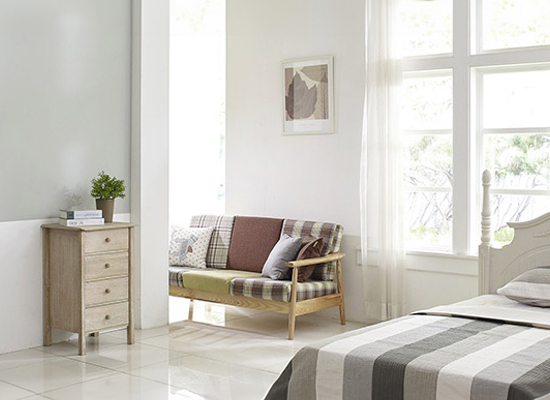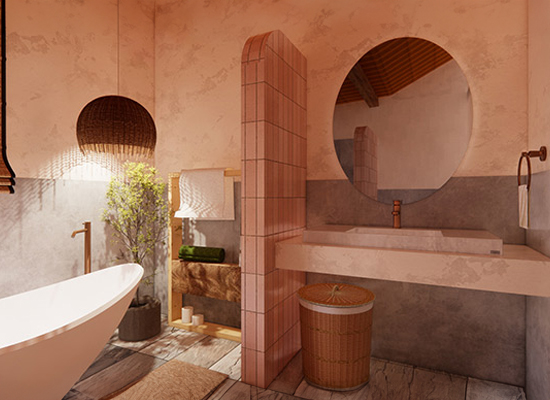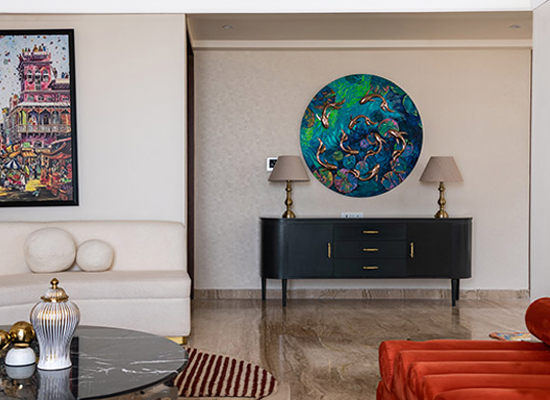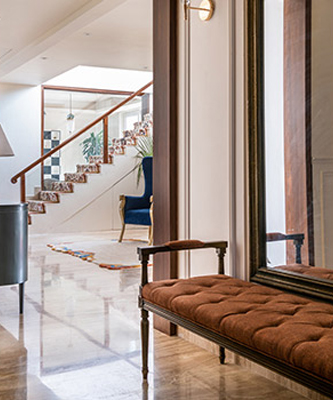Part 3 - Tips for Maximizing Natural Light in Your Home
Skylights and Solar Tubes:
Skylights and solar tubes are excellent options for maximizing natural light in your house. They provide a direct source of daylight from above, reducing the need for artificial lighting and creating a bright and welcoming atmosphere. Here's how to use skylights and solar tubes effectively to enhance natural light in your home:
Skylights:
Placement:
Install skylights strategically in areas where you want to maximize natural light. Common locations include living rooms, kitchens, bathrooms, and bedrooms. Consider placing skylights above dark or windowless spaces like hallways and staircases.
Size and Number :
Choose the appropriate size and number of skylights to suit the room's dimensions and your lighting needs. Larger skylights provide more light but can also generate more heat, so consider your climate and energy efficiency.
Fixed vs. Vented:
Skylights can be fixed or vented. Vented skylights allow for natural ventilation, which is beneficial for air circulation. However, be sure to have them fitted with a rain sensor to automatically close them in case of bad weather.
Glazing Options:
Consider skylights with energy-efficient glazing, such as low-E coatings and UV protection, to prevent excessive heat gain and fading of interior furnishings.
Blinds or Shades:
To control the amount of light and heat entering your home, consider adding skylight blinds or shades that can be adjusted to your preference. Light Shafts: Use light shafts or tunnels to direct and diffuse light from skylights. Light shafts can be lined with reflective materials to increase the distribution of natural light.
Blinds:
Horizontal blinds, such as venetian or mini blinds, are excellent for controlling the amount of light. You can adjust the slats to let in as much or as little light as needed. Choose blinds in a light color to reflect more light into the room.
Solar Tubes (also known as Sun Tubes or Light Tubes):
Ideal Locations :
Solar tubes are ideal for spaces where skylights may not be feasible, such as rooms with limited roof access or irregular ceiling structures. They work especially well in hallways, bathrooms, closets, and small spaces.
Size and Number :
Solar tubes come in various sizes, so choose the right size for your space. Consider using multiple solar tubes if needed to distribute light more evenly.
Tube Material :
Select solar tubes with highly reflective tube materials to maximize the amount of light transmitted from the roof to the interior.
Consider Light Kits :
Some solar tube systems come with electric light kits that can be integrated, allowing you to use them as both natural and artificial lighting sources.
General Tips:
Consult a Professional :
Both skylights and solar tubes require proper installation to ensure they are weatherproof and energy-efficient. Consult a professional to assess your home's needs and install the chosen daylighting system correctly.
Energy Efficiency:
To maintain energy efficiency, consider using skylights or solar tubes with energy-efficient glazing, insulated shafts, and blinds or shades that can be adjusted as needed.
Decor Integration
When designing or redecorating a room with skylights or solar tubes, ensure that your decor complements the influx of natural light. Light-colored walls and furnishings can make the most of the additional brightness.
Skylights and solar tubes are valuable additions to your home, enhancing your well-being and reducing energy consumption. When used strategically, they can transform your living spaces by bringing in abundant natural light, creating a more comfortable and inviting environment.
Utilize Open Floor Plans:
An open floor plan is an excellent design strategy for maximizing natural light in your home. It allows for unobstructed light flow throughout the space, making the entire area feel bright and airy. Here are some ways to use an open floor plan to enhance natural light:
Remove Walls:
Open floor plans often involve removing non-load-bearing interior walls to create a seamless flow between spaces. Removing walls allows natural light to travel more freely throughout the home.
Combine Living Areas:
Consider combining your living, dining, and kitchen areas into a single, open space. This minimizes the number of interior walls and encourages the sharing of natural light between these spaces.
Use Fewer Partitions:
In areas where you must maintain separate rooms (e.g., bedrooms and bathrooms), use partial walls, partitions, or sliding doors to allow light to pass through when not in use. Frosted or glass partitions can maintain privacy while still allowing light to filter through.
Expansive Windows:
Maximize the amount of natural light by incorporating large windows or glass doors. These openings provide abundant daylight and a direct connection to outdoor spaces.
Check for Streaks:
After the window is dry, inspect it for streaks or smudges. If you notice any, dampen a clean cloth with a small amount of the cleaning solution and gently rub the affected areas. Then, dry and polish again.
Keep Ceiling Heights Consistent:
Maintaining consistent ceiling heights throughout the open space helps light travel more evenly. This eliminates shadows and maintains a sense of openness.
Reflective Materials:
Use materials with reflective properties, such as light-colored walls, glossy surfaces, and mirrors, to bounce light around the open floor plan.
Minimalistic Decor:
A minimalist decor style complements open floor plans well. Fewer items and clutter make the most of the spacious feel and emphasize the importance of natural light.
Zoning with Furniture:
Use furniture arrangements to define different zones within the open space. Avoid blocking the flow of light by keeping furniture low or using pieces with open designs.
Interior Courtyards or Atriums
If your open floor plan is in the middle of your home and doesn't have direct access to exterior walls, consider adding an interior courtyard or atrium with windows and skylights to introduce natural light into the center of the space.
Consider Glass Walls:
If you want to maintain some separation between rooms but still desire maximum light flow, consider using glass walls or dividers.
Plant Life:
Introduce indoor plants near windows or skylights. Not only do they add a touch of nature, but they also thrive in natural light.
Window Treatments:
When using window treatments in an open floor plan, opt for sheer or light-filtering materials. These allow you to control privacy while still maximizing natural light.
By embracing an open floor plan and these design principles, you can create a home that's filled with an abundance of natural light. The result is a welcoming, airy, and spacious living environment that enhances your overall well-being and energy efficiency.
Clean, Light-Colored Flooring:
Choosing clean, light-colored flooring is an effective way to maximize natural light in your home. Light flooring reflects light, brightens your space, and creates a sense of openness. Here are some flooring options and tips for enhancing natural light in your home:
Hardwood Flooring:
Light hardwoods, such as oak, maple, or birch, can add warmth and natural elegance to your home while reflecting light. Choose a clear or natural finish to maintain the light color.
Light-Colored Laminate:
Laminate flooring comes in various shades, including light colors that mimic the appearance of hardwood. Laminate is affordable and durable, making it a practical choice for many spaces.
Light-Colored Tile:
Light-colored tiles, like white or pale gray, can brighten kitchens, bathrooms, and entryways. Large-format tiles with minimal grout lines can create a clean, light-enhancing look.
Light Stone Flooring:
Light natural stone, such as travertine, limestone, or marble, can provide a luxurious feel while reflecting light. Polished stone surfaces can amplify the brightness of your space.
Light-Colored Vinyl:
Modern vinyl flooring comes in a wide range of styles, including designs that mimic the appearance of wood or stone. Light-colored vinyl is easy to clean and maintain.
Light-Colored Carpet:
If you prefer carpet, choose a light color that complements your decor. Keep in mind that carpets with low pile heights or those made of more reflective materials can enhance the reflection of light.
Light Stained Concrete:
Stained concrete floors can add an industrial and contemporary aesthetic to your space while reflecting light. These floors are a great option for a minimalist and clean look.
Reflective Finishes:
Consider flooring with reflective or glossy finishes. These finishes will help amplify the natural light and create a brighter atmosphere.
Maintain a Consistent Look:
Use the same light-colored flooring throughout an open floor plan to maintain a consistent and open feel. This approach allows light to flow seamlessly from room to room.
Use Area Rugs Sparingly:
If you want to introduce some contrasting color or texture, use area rugs on light-colored flooring rather than wall-to-wall carpet. Rugs can anchor furniture and add style while keeping the floor bright.
Keep Flooring Clean:
Regularly clean your light-colored flooring to ensure it remains reflective. Dirt and dust can diminish the brightness of the floor.
Match Flooring to Wall Color:
Choosing flooring that complements the color of your walls can create a cohesive and harmonious space. Light walls combined with light flooring can work together to make the room feel even brighter.
Window Coverings:
Select window coverings that allow you to control the amount of light entering the room. Light-filtering or sheer curtains can soften the incoming light without blocking it completely.
Combine with Reflective Decor
Use mirrors, glass accents, and metallic decor to enhance the reflective qualities of light-colored flooring.
Light-colored flooring not only brightens your space but also complements various interior design styles. By incorporating these flooring options and design tips, you can create a well-lit and inviting home filled with natural light.
Maximizing natural light in your home not only enhances its visual appeal but also contributes to a healthier and more energy-efficient living environment. By incorporating these tips, you can create a brighter, more inviting, and visually spacious home for you and your family to enjoy.
Copyright ©2025 All rights reserved. Maintained by Brand Radix.












